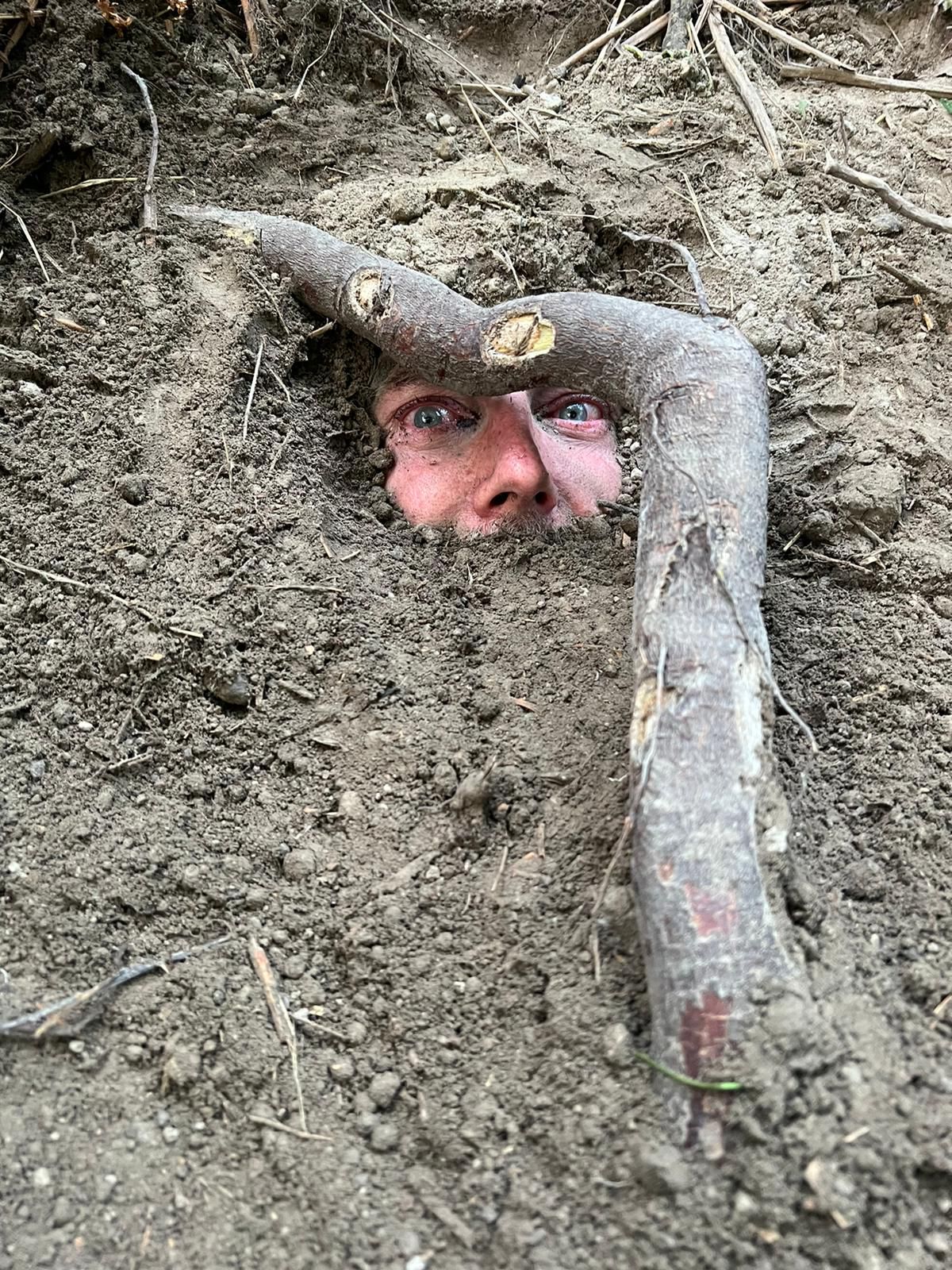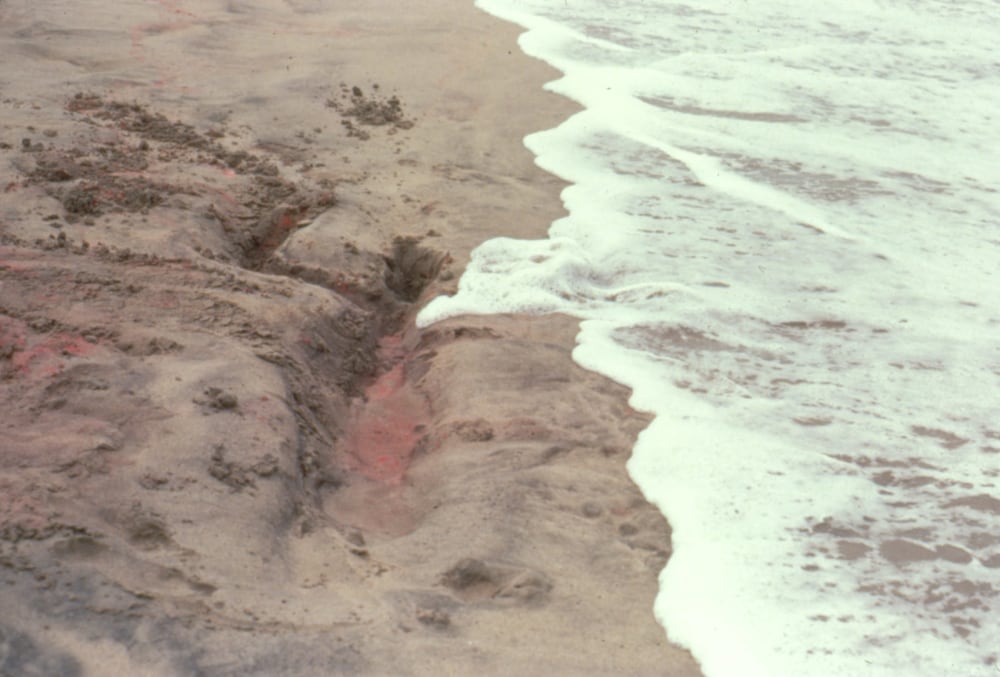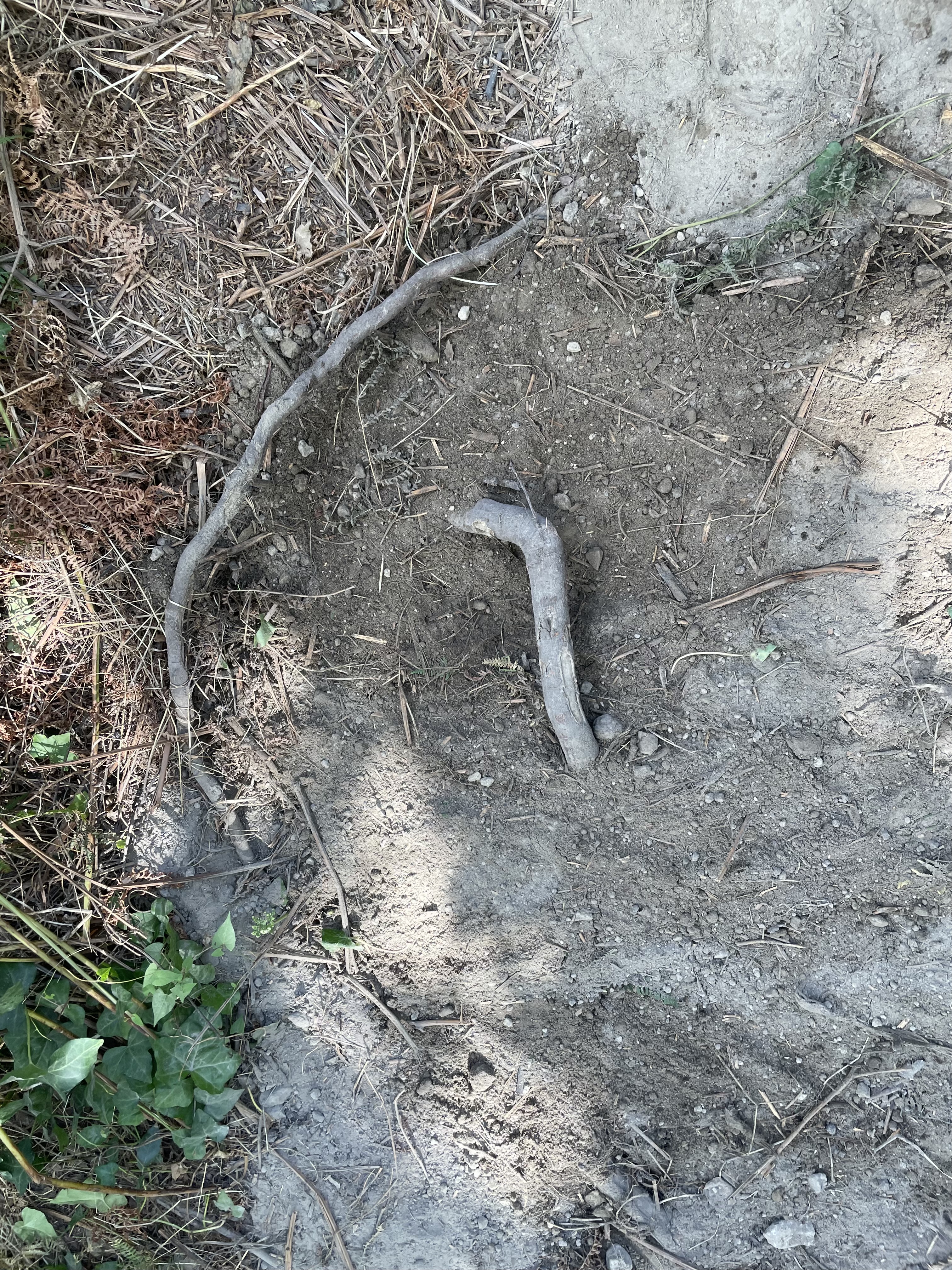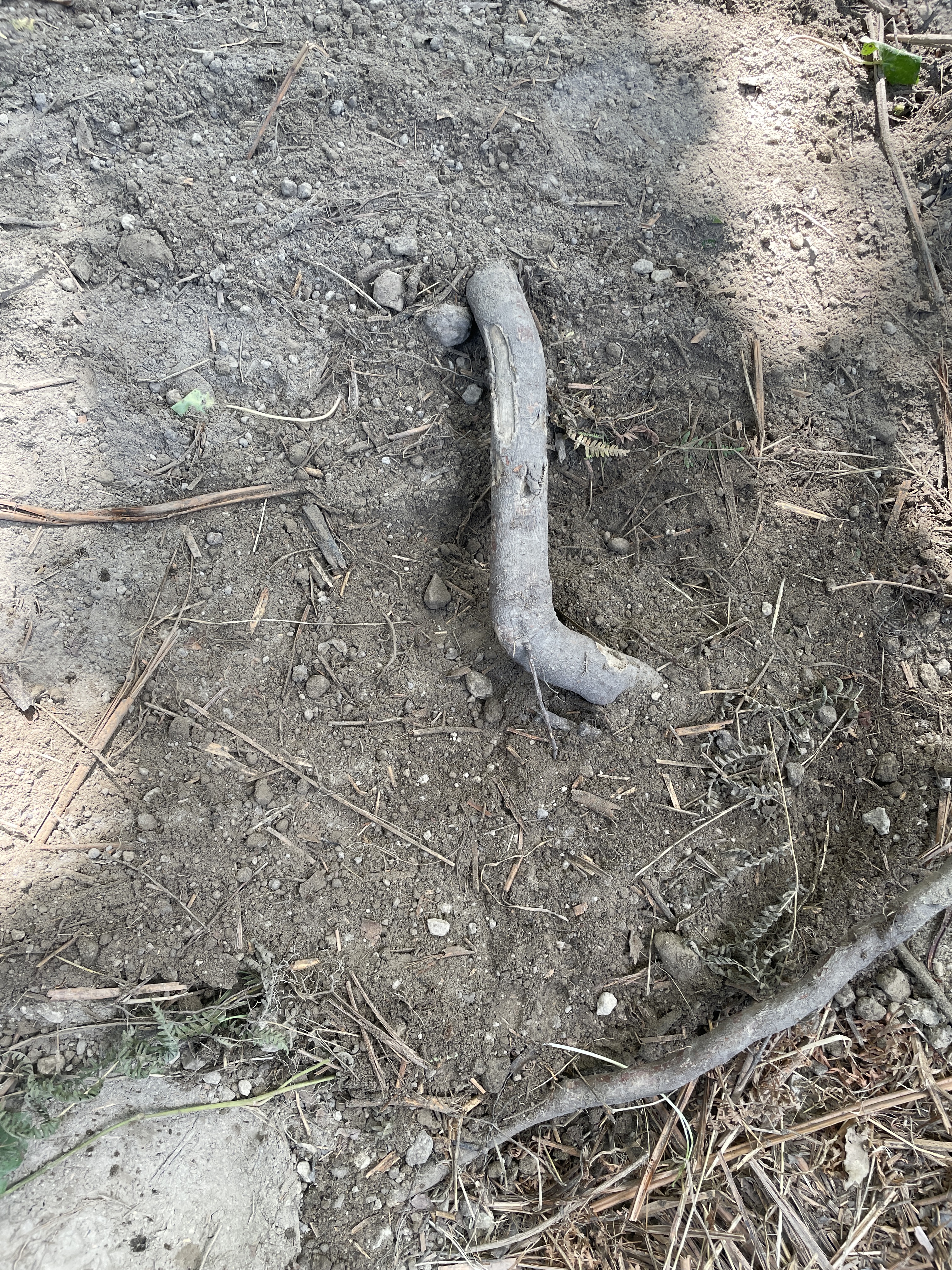
Last summer, in collaboration with various shovel-wielding partners, I performed a series of full-body inhumations inside an active volcano near Naples, Italy. In so doing, I had hoped, in part, not just to think about ‘Place’, per se, or about that place, or even in that place, but also as that place. To make – to whatever extent it’s possible to do so – an ontological sacrifice of my being’s distinction in order to more fully participate in a common being with the volcano.
In the midst of these experiments, I noted the following: Buried alive inside Monte Nuovo for the sake of producing an earthwork (that is, subjected to objectification), the physical and psychic pressures increase, become crushing. Subjectivity-constituting senses are subtracted, and new sensations (e.g., acouophonias) are begat from within, as if I were rock undergoing metamorphosis. As my phenomenology becomes increasingly stoney, so does my temporality: the human durée is replaced by a geological one. Such transmogrifications don’t just happen to me. Geology too is changed. The stone, the strata, the earth itself, becomes more Wayne-like: Space contracts around me; Time’s scale shrinks, compresses, re-liquifies, is mobilized — humanized. My goings-under, undergoings of katabasis & anabasis, thus help clarify the earth’s own convections. Albeit temporarily, we obey the same temporal geo-logic: presence (of a present, however specious) absents itself, is pressed downward, deeper into the past, where it gets metamorphosed into future potential by an overburden (historical and otherwise), and is ultimately made available for re-presentation/representation before being subsumed, again & again. This is something I now have more obviously in common with the earth as a whole, and this place in particular, than most other living humans. Each of us — Wayne and the volcano — might therefore be described as having approached the other’s being, asymptotically — a convergence predicated by acknowledgment of our fundamental difference, as Irigaray has it; or, per Derrida, différance. Such an ontic anabasis might actually afford a basis for some sort of consensus politics — a geo-anarchy; an anarcho-geology — that Earth’s human and non-human stakeholders could share in…
There were obvious aesthetic similarities between these experiments and the work of Ana Mendieta – not just Untitled (Grass Breathing) & Burial Pyramid, but also her Siluetas series. In The Ethics of Earth Art, Amanda Boetzkes asserts that in those latter works, Mendieta’s body “acts as both an overflowing receptacle and a surface that registers the point at which sensation abounds beyond the body’s capacity to organize and interpret it.”
Might the reverse also be true, I wondered? As I overflowed with earth-excess (dirt in my nose & eyes, beetles in my ears, a tick stuck to the underside of my tongue), wasn’t it also the case that earth overflowed with me? That I too was a surfeit, metaphysically, if not geophysically — this apparent paradox of scale being less a matter of matter than of being.
After the “interpenetration of…body and the earth,” I could not be “washed away, burned, melted, or otherwise reintegrated into the land by elemental forces” (Boetzkes again), not entirely. Rather, wherever, whenever, my body was emplaced, something remained — for lack of it having anywhere else to flow away to; of anything else into which it might be transfigured: evidence of an absented presence. That is, a trace – a mark of passage, in both space and time.

Mendieta’s trace, photographed, might be described as a presence indexing an absence of an absence indexing a presence. What I mean by that: as Mendieta laid down on the shore at low tide, then got up, leaving an imprint of her body in the sand, then photographed that before the water washed it away, the initial absence (of Mendieta; of art) had a presence impressed into it; removing her body (metonymic for, or performative of, presence), a new absence got exposed – this one indexical of past presence. This second absence was meant to be temporary, to disappear: an absence absenting itself. Before that could happen, however, a photograph was taken of it – a photo that both documented the indexical absence of presence and, by arresting the absenting of that absence with an image that fixed its – or, rather, a secondary trace of its – presence, re-presenting/representing it, itself became an indexical absence: a presence-as-absence, entangled with the absence-as-presence of the initial trace.
In my inhumations, I tried to elaborate this artistic process as part of a larger geographic research method I’ll write more about here later. Suffice it to say for now that by continuing the effacement, the absenting, of my own presence while remaining bodily present – allowing myself to be completely buried until the scene, at the surface, became indistinguishable from an original, non-indexical absence (of me; of art) – I attempted to absorb, and be absorbed by, my own trace; to take part in the convective geo-logic of the earth and experience a katabasis of de-presentation – at once a posteriori, a priori, and en route to re-presentation/representation – that afforded phenomenological & epistemological perspectives I couldn’t have participated in otherwise.
Here are two images from an inhumation within the volcano. In which of them am I underground?


Deb Chachra, who buried me on this occasion, is the only person with direct phenomenological experience of what it looked like at the surface throughout. I was experiencing it from the other side of the dirt. Anyone else, minus the sequence of intermediary documentary evidence, will have to take our word for it.
Once you know I’ve been inhumed like that, the whole volcano – the whole Earth, in some sense – is made gravid with the possibility of me being inside it. Seriously, though. Wherever one stands, it does become harder to believe that somebody, something, some past present with potential for future presence, isn’t hidden there – just there – beneath the surface. Because, of course, it is.
March 20, 2024 at 2:02 pm
Legend
March 24, 2024 at 5:38 am
[…] https://wchambliss.wordpress.com/2024/03/20/without-a-trace/ […]